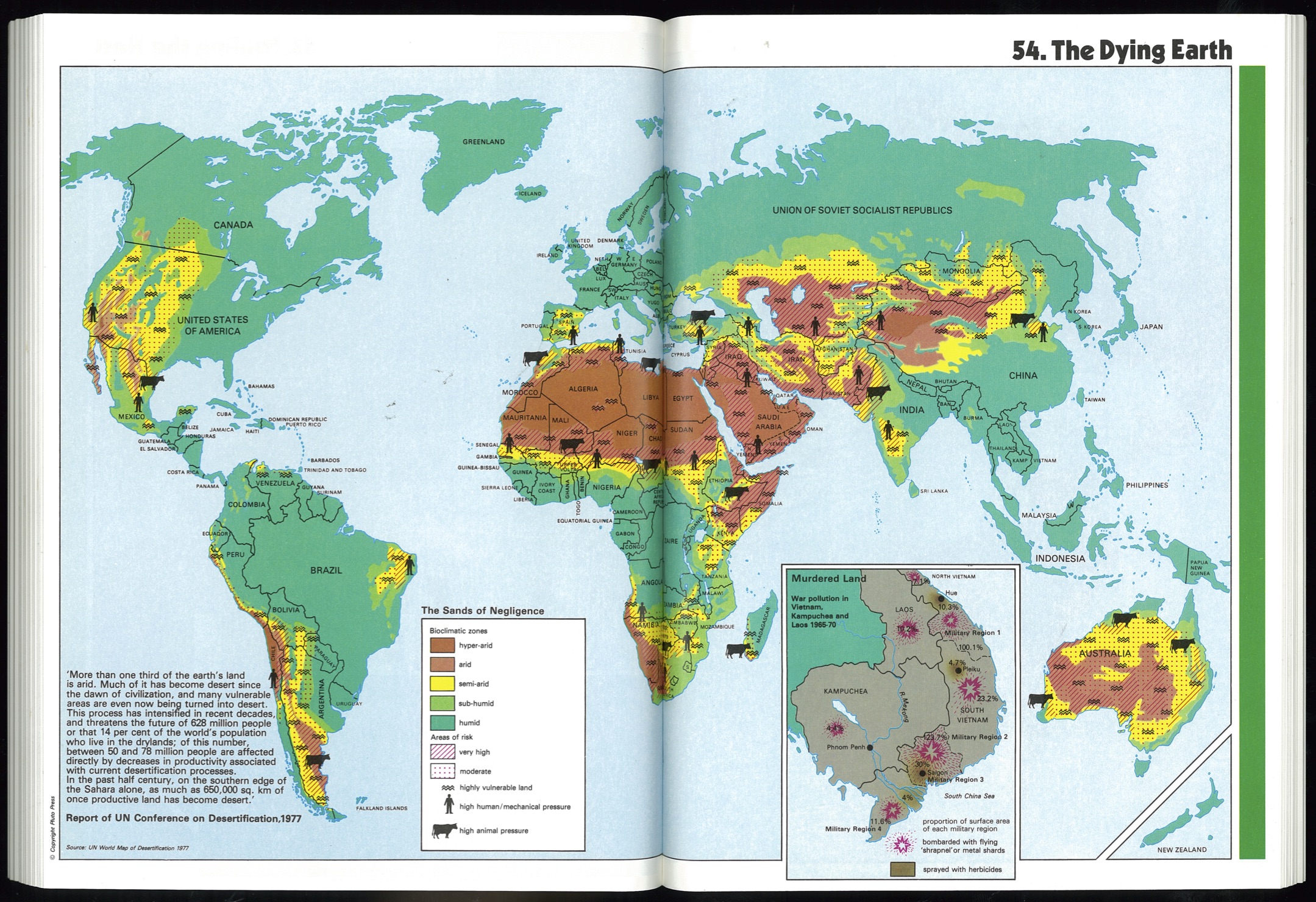

|
The purpose of this map is to demonstrate not only the steady increase in desert across the earth, but also the part played in this increase by neglect and deliberate injury.
The map identifies bioclimatic zones, shows areas where there is very high or moderate risk of intensifying or extending aridity and some of the major causes. Vulnerable land includes stony or rock surfaces, areas subject to soil stripping and ‘gully erosion’, areas subject to sand movement, and land with excess salt or bad soil structure. Human and animal pressure refers to density of human population and livestock. Human pressure also includes intense pressure of cultivation associated with mechanization.
It has taken thousands of years for large tracts of desert and semi-desert land to develop out of what were once fertile regions: years in which haphazard human encroachment has upset the delicate balance on which ecological renewal depends.
In recent years this encroachment has become more violent. In large parts of Africa for example, population pressure, patterns of land ownership and war have intensified the destruction of land, increased blight to a virtually endemic condition and produced almost permanent famine (see Map 44: Our Daily Bread).
Technology has made possible more deliberate large-scale encroachment and drastic changes in land use can be effected. Vast tracts of rain forest in Brazil are now being turned into grazing land, creating a potential desert in the future.
The extension of desert and arid zones has more than local and regional significance. Large-scale changes in land patterns and use can have major effects on both the weather and the renewal of the world’s oxygen supply.
In times of war, even more powerful techniques of destruction are employed, and employed deliberately. The inset map shows the extent of war pollution in Vietnam, Kampuchea and Laos. Whole regions have been poisoned and destroyed through the spraying of herbicides and defoliants and bombardment with shrapnel.
The report of the UN Conference on Desertification 1977 concluded that although more than one-third of the earth’s land is already arid, declining fertility and productivity, caused by intensification, will affect the livelihood of well over 600 million people, most of whom live in poor states.
HTML last updated on 29 November 2020